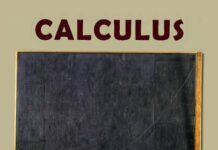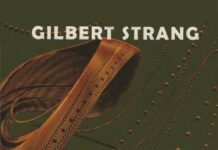
Ebook Info
- Published: 1996
- Number of pages: 500 pages
- Format: PDF
- File Size: 15.87 MB
- Authors: Gilbert Strang
Description
This book explains wavelets to both engineers and mathematicians. It approaches the subject with a major emphasis on the filter structures attached to wavelets. Those filters are the key to algorithmic efficiency and they are well developed throughout signal processing. Now they make possible major achievements in data analysis and compression. The explanations of difficult topics are direct, rigorous and very approachable. Many practical applications are discussed. The book is ideal as an introduction to the principles of wavelets and as a reference for the analysis and applications. Also included in Wavelets and Filter Banks are many examples to make effective use of the MATLAB Wavelet Toolbox.
User’s Reviews
Editorial Reviews: Book Description A comprehensive treatment of wavelets for both engineers and mathematicians. About the Author Gilbert Strang received his Ph.D. from UCLA and since then he has taught at MIT. He has been a Sloan Fellow and a Fairchild Scholar and is a Fellow of the American Academy of Arts and Sciences. He is a Professor of Mathematics at MIT and an Honorary Fellow of Balliol College. Professor Strang has published eight textbooks. He received the von Neumann Medal of the US Association for Computational Mechanics, and the Henrici Prize for applied analysis. The first Su Buchin Prize from the International Congress of Industrial and Applied Mathematics, and the Haimo Prize from the Mathematical Association of America, were awarded for his contributions to teaching around the world.Truong Nguyen came to the Jacobs School in 2001. He manages the Video Processing Group, and teaches courses associated with the Signal Image Processing Program (SIP). He is a 1995 recipient of an NSF career award and is author of several MATLAB-based toolboxes on image compression, electrocardiogram compression, and filter bank design. He also holds a patent on an efficient design method for wavelets and filter banks and several patents on wavelet applications including compression and signal analysis. He received his Ph.D. from Caltech in 1989.
Reviews from Amazon users which were colected at the time this book was published on the website:
⭐Ok. I am divulging a secret here. This book is a hidden Gem, who never actually realized its potential, it seems. It packs so much crucial / critical information about DSP, multirate techniques, filter design, multirate system optimization that its simply incredible !!! I however agree with the reviews which rate its difficulty high, and a reviewer claiming that it has been written in bouts of inspiration. I can associate with him, and yet, associate more with the authors, when they set about writing on this topic. Its a huge undertaking for one. The literature was/is exploding all the time. To give a composite picture, they are freaking hard pressed. No wonder, people find it tiring, and give up before they could realize what a gem of a creation it is. Gilbert strang, is really at his best here. He is plunging left , right and center, grasping concepts in his solid hands, and massaging them for palatability. I found the book intimidating too, at first, but looked at other texts. The gaps that others would always leave, this book would come in and fill them, not only fill them, but solidify them, re-enforce them with pure concrete.Since I said I will be divulging , here is my advice on people starting out with it. Dont take the progression of book too seriously. Its not that its flawed, its just that one cannot appreciate its beauty at the outset. So , do not cover the material as it presents itself. Atleast not the whole of it. And there can be different points of emphasis for people approaching from different directions, but generally, try to glean important DSP details, and leave the multiresolution stuff for a later date. One should keep coming back to it every now and then, and you would see it makes more sense. Chapter three, four and five. And most expecially FOUR. Thats the meat of the book, and truly striking. But to get struck, you have to be listening closely to him in Chapter 2. Chapter 3 is a meticulous, nowhere ever to be found treatment of sampling with z operators. Pay very close attention. Once you hit Chapter 4 then, you will be able to appreciate the perfect reconstruction framework. Chapter 4 then trails off, and emphasized alias cancellation a little too much. Again no fault of authors, just the way things stand in literature. Kind of misses the perfect reconstruction condition, and finishes off introducing polyphase notation. You have to keep in mind that perfect reconstruction conditions still need to be satisfied and hence all the later chapters. Keep coming back to three and two whenever you feel you are getting lost.I suggest Vitterli’s subband coding and Fred Harris multirate communications are very helpful texts to go with it, for people implementing with a practical flavor in mind. Esp Fred Harris gives a totally striking transciever view of the whole theory. Can help tie things together more beautifully.In short, the reviews dont quite do justice to this momentous text. Its trully striking. Its truly a work of love. And absolutely dead instructive. Instruction doesnt get any better.
⭐Pretty thick stuff, but for what I want, it’s pretty good.
⭐A unique (?) book on all manner of statistical filters. Written in lecture-note style, not as smooth as some texts. Authoritative. The filter-bank interpretation of wavelet methods is particularly useful.
⭐I have taken several courses on DSP. I found that this text takes topics that were presented, expanded them in great detail. It took some of the mystery out of my previous presentations. Anyone working with DSP should have this on their shelf!
⭐Really great quality for the price.
⭐I have this book for a wavelet course. I find this book cryptic and not very easy to learn about wavelets.
⭐The book start from very basic concept, and then step by step lead you to wavelet, and end at applications.You need only undergraduate level DSP knowledge to learn this.
⭐At many US universities, math departments offer service courses in math for the engineers, and there is a periodic discussion of the curriculum. One difficulty is that the two sides speak different languages;– in math, it is linear algebra, calculus…,- and in engineering, signals, high-pass/low-pass filters, downsampling/upsampling, filter bank, polyphase matrix…A wonderful feature of the Strang-Nguyen book is that it speaks both languages. In this way it is refreshing, and it stands outin a class of its own. It has been tested in courses for engineers, and stood the test. From what I hear, it is equally popular in the two cultures, math and engineering.
Keywords
Free Download Wavelets and Filter Banks 2nd Edition in PDF format
Wavelets and Filter Banks 2nd Edition PDF Free Download
Download Wavelets and Filter Banks 2nd Edition 1996 PDF Free
Wavelets and Filter Banks 2nd Edition 1996 PDF Free Download
Download Wavelets and Filter Banks 2nd Edition PDF
Free Download Ebook Wavelets and Filter Banks 2nd Edition



